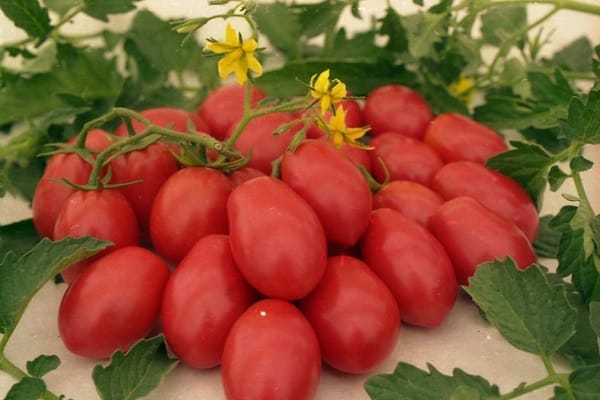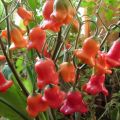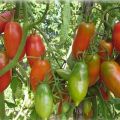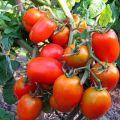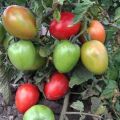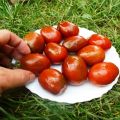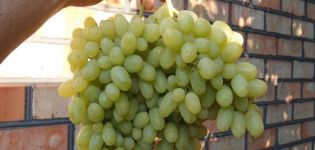Description of the tomato variety Bellflower, recommendations for growing and care
When choosing varieties for obtaining dense fruits, you should definitely pay attention to the bell tomato. Plants of this species are high-yielding and tolerant to adverse weather conditions.
Description
Medium early determinant variety. The height of the bush is 50-60 cm. The leaves are small, light green. The plant is medium leafy. Since a large number of fruits are tied on the plant during the fruiting period, it is recommended to tie up the stems. When using supports, the risk of damage is minimal.
The fruit is shaped like a pear with an elongated sharp tip... The clusters consist of 6–7 fruits weighing 50–60 g. Ripe fruits are pink-scarlet. The fruits are used for making salads, canned whole fruits and decorating dishes.
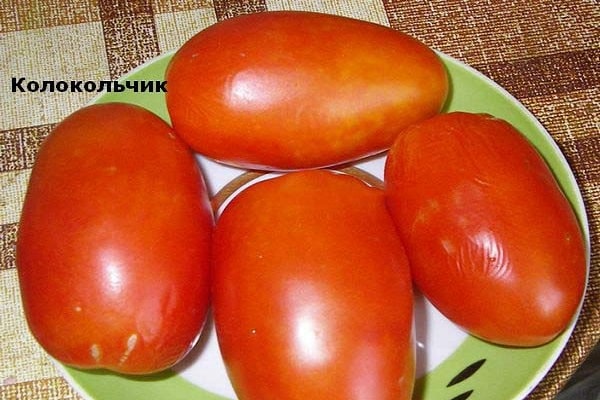
The core is juicy and dense. There are few seed chambers. The tomatoes taste sweet with a barely perceptible sourness. Thanks to the strong skin, the fruits are resistant to cracking, tolerate long-term transportation well and are stored for a long time.
The variety is intended for open field cultivation. In the event of a rainy or cold summer, tomatoes are grown in a greenhouse.
Bell Tomatoes have the following benefits:
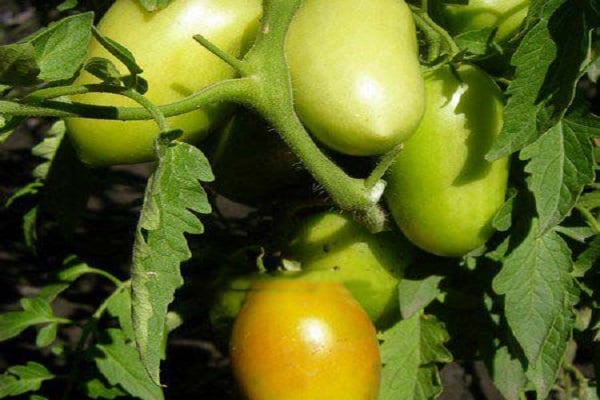
- versatility of fruits;
- original form;
- do not require any special care;
- tolerant to temperature fluctuations;
- has a high immunity to most tomato diseases.
For abundant fruiting, the plant needs to provide nutritious soil, pinching.
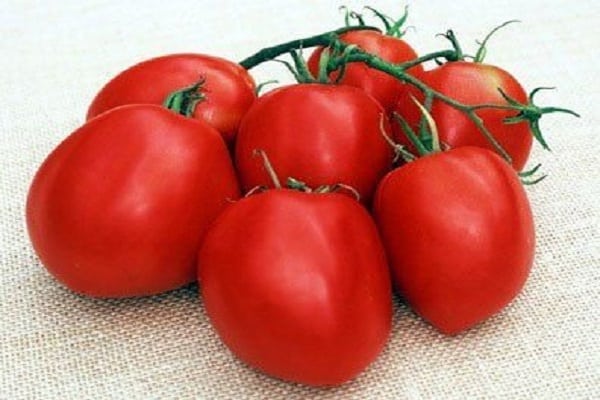
Features of growing and care
To obtain tomato seedlings, seeds are sown after May 15 in containers filled with a loose substrate. To create a greenhouse effect, the container is covered with a piece of glass or film on top. After the shoots break through, the shelter is removed, the box is placed in a lighted place and the temperature is lowered by several degrees. In a cool environment, the sprouts do not stretch.
The subsequent care of tomatoes includes the following manipulations:
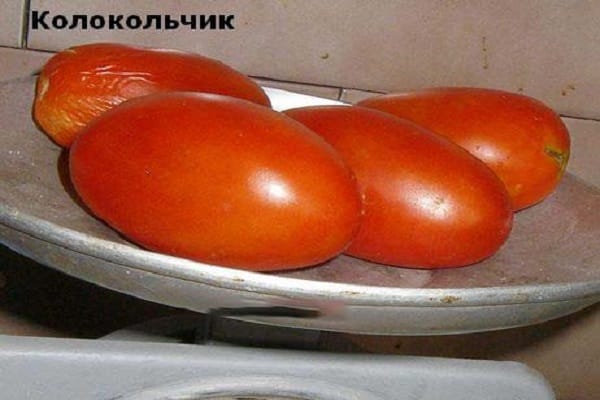
- Watering. Tomatoes are one of those crops that are afraid of high humidity. To prevent the development of fungal diseases, plants are watered abundantly, but rarely. Under the condition of dry summer, the bushes are watered once a week. Water consumption per adult plant is 3-4 liters. After each watering or heavy rain, the soil is loosened, and the bushes are slightly huddled.
- Dive. Plants are transplanted from a large container into separate pots at the age of 2-3 true leaves, and to a permanent place - after the formation of 5 leaves.
- Stepson and garter. The best scheme for growing a high-yielding variety is one or two stems. In the first case, all lateral processes are removed, in the second, two stems are left. To prevent the plant from getting sick, stepchildren are removed gradually.Plants are tied to metal or wooden stakes immediately after they have taken root in a permanent place.
- Top dressing. In the first period of development, tomatoes are fed with organic or mineral fertilizers with a balanced amount of nitrogen, phosphorus and potassium. After the plants enter the flowering and fruiting phase, only mixtures are introduced, which consist mainly of potassium and phosphorus. Top dressing is carried out at intervals of 2 weeks.
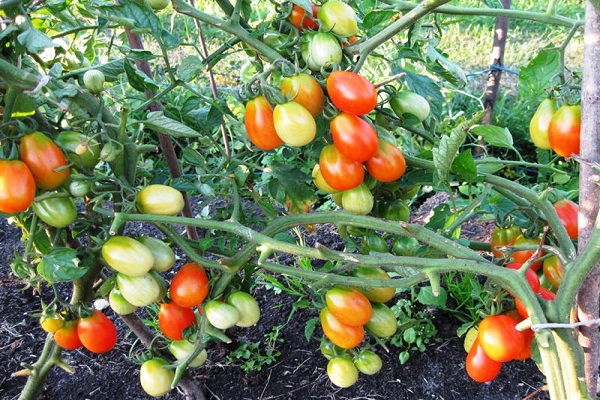
Reviews
Judging by the opinions of novice and experienced gardeners, the Bell takes its rightful place among all other varieties and hybrids. Tomatoes have a pleasant sweet taste and firm pulp, which makes them suitable for salads and canned food. The plant shows good yields in the northern regions.
Have you ever grown the Bell variety? Plant him again? Leave reviews so that other vegetable growers do not make the wrong choice.
